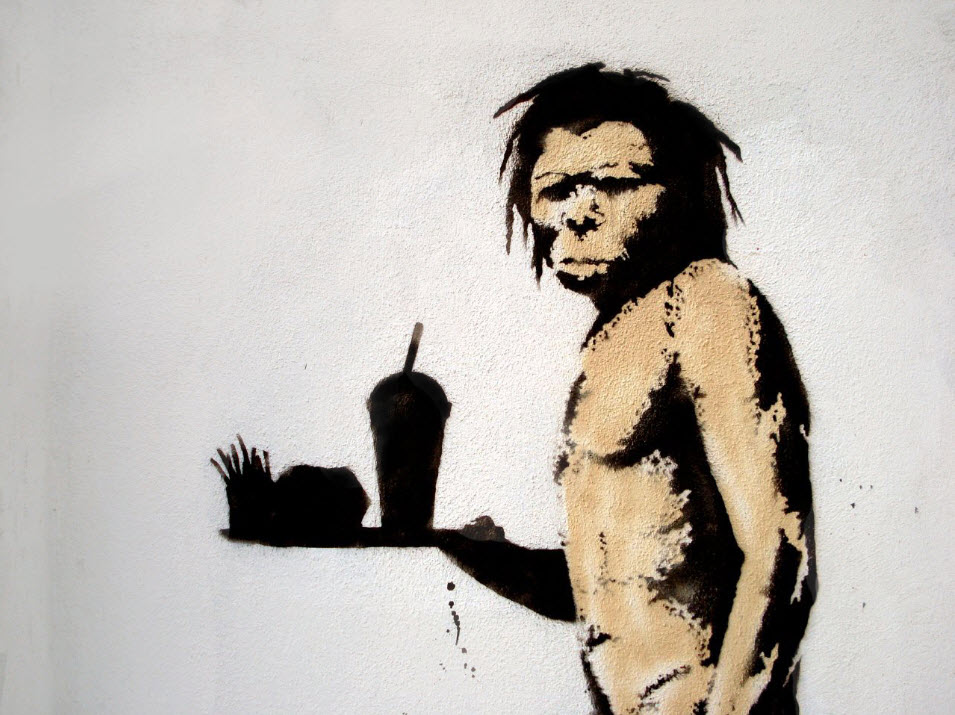Honestly, keeping up with all of the new trends in the health and fitness industry can be exhausting. CrossFit and Barre workouts were enough to process in the exercise realm. But the onslaught of new diets these last few years has been nothing short of ridiculous.
When the dust settled, IIFYM (If It Fits Your Macros) and flexible dieting were in the forefront. Why? Well, it’s not hard to see the appeal: people are tired of strict diets that feel more restrictive than empowering. Plus… IIFYM let’s you eat dessert. That alone converted plenty of people.
Still, the Paleo diet refused to go away, and with good reason. It encourages people to essentially “eat the way their ancestors would have.” And the more you look at the average person’s diet today, the more you realize that this diet might be exactly what people need. Sure, the Paleo diet may be something that athletes and health nuts around the world can take advantage of to further their health and fitness goals, but it’s also something your average person can benefit from.
Junk Food: It’s Not Funny Anymore
In the U.S alone, 35.7% of adults are considered obese. Forget about looking good in a swimsuit; implementing the right diet can actually make a huge difference in a person’s quality of life.
One of the most notable contributing factors to this obesity epidemic is that the standard U.S adult diet is made up of about 70% processed foods. Why does that matter? Well, let’s get this out of the way: processed foods are usually loaded with tons of added sugars. Throw in a lack of portion control, and you can see how this can quickly result in ballooning waistlines.
More importantly, these processed foods are genetically engineered to be as “desirable” as possible. Understand that our natural physiology is designed to push us in the direction of foods that are salty and sweet. Why? Well, those foods trigger certain physical responses that make them borderline addictive.
So, you’ve got addictive food with tons of added sugar… what could possibly go wrong? Well, we’ve got one more minor issue: most processed foods have artificial ingredients. Then again, ingredients probably isn’t the right word. “Chemicals” is probably a more accurate term.
Granted, these foods have all been tested for safety, so they certainly aren’t going to make you sick on consumption. But eating addictive chemical concoctions might not be the best way to lose weight (or live a healthy life).
Following the Paleo Diet
Essentially, the Paleo diet is built around an idea. The idea that the average person was designed to eat food, not chemicals. If you’re following the Paleo diet, you’re looking to eat the way that our ancestors ate during the Paleolithic Era (hence the “Paleo” part). What does that actually mean? Essentially, you’re looking at consuming real meat, vegetables, and seasonal fruits (that haven’t been chemically modified).
But let’s go one step beyond that. Grains were actually a product of the agriculture movement. That whole “settling down” thing that people did? It fundamentally changed how we did everything (which included our food). Instead of focusing on the meat, veggies, and fruits that we always had, we began to focus more on consuming the grains that we farmed. The only problem? Our genetics haven’t had time to adjust to our new diet.
Here’s all you need to understand about grains: most of them contain gluten and lectin. Gluten is found in wheat, barley, and rye — and if you happen to be one of the 18 million Americans that have a gluten sensitivity, it can cause you everything from joint pain to acid reflux. As if that wasn’t enough, lectins are actually natural toxins that exist within grains to defend them against consumption. Lectin can do quite a number on your gastrointestinal tract, preventing the tract from repairing itself on a regular basis.
So, you want to follow the paleo diet? Eat real meat, fruit, and veggies. Remember: mechanically-processed is fine, but avoid anything chemically-processed.
Wait, what about carbs?
Of course, if you know anything about the human body, you’re probably asking yourself one question: where am I supposed to get my energy? After all, carbs are generally what we’re taught is going to give us energy. While it’s true that a spike in carbs can give you a burst of energy down the line, there’s a process that your body goes through that prevents this lack of carbs from being an issue.
The body was actually designed to survive on significantly fewer carbs that we consume today. With the absence of carbs, your body begins a process known as ketogenesis. In its simplest terms? Your body will take stored fat and use that as energy (which is what fat was supposed to be used as, anyway).
Your body can do this because it was designed to work this way. It might seem like a revolutionary idea, but your body has been waiting for this diet ever since the day you were born.














-300x200.jpeg)
-300x213.jpeg)










